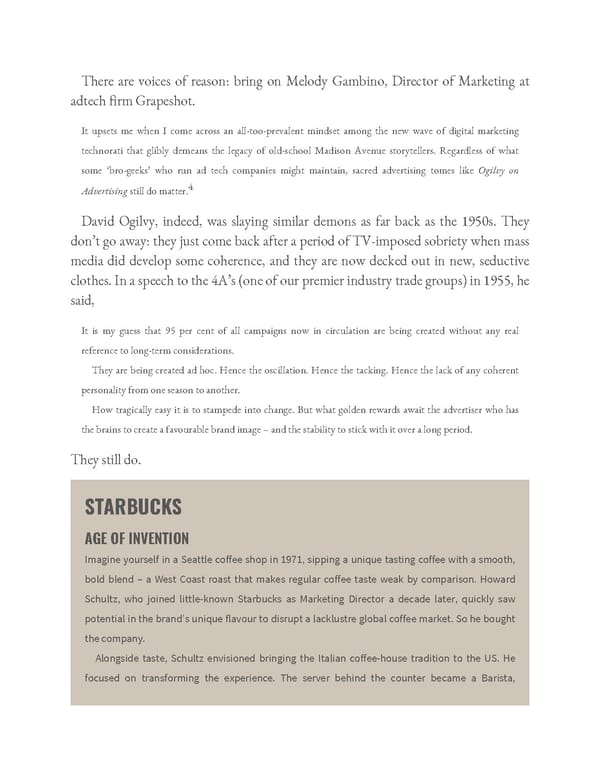There are voices of reason: bring on Melody Gambino, Director of Marketing at adtech firm Grapeshot. It upsets me when I come across an all-too-prevalent mindset among the new wave of digital marketing technorati that glibly demeans the legacy of old-school Madison Avenue storytellers. Regardless of what some ‘bro-geeks’ who run ad tech companies might maintain, sacred advertising tomes like Ogilvy on 4 Advertising still do matter. David Ogilvy, indeed, was slaying similar demons as far back as the 1950s. They don’t go away: they just come back after a period of TV-imposed sobriety when mass media did develop some coherence, and they are now decked out in new, seductive clothes. In a speech to the 4A’s (one of our premier industry trade groups) in 1955, he said, It is my guess that 95 per cent of all campaigns now in circulation are being created without any real reference to long-term considerations. They are being created ad hoc. Hence the oscillation. Hence the tacking. Hence the lack of any coherent personality from one season to another. How tragically easy it is to stampede into change. But what golden rewards await the advertiser who has the brains to create a favourable brand image – and the stability to stick with it over a long period. They still do. STARBUCKS AGE OF INVENTION Imagine yourself in a Seattle coffee shop in 1971, sipping a unique tasting coffee with a smooth, bold blend – a West Coast roast that makes regular coffee taste weak by comparison. Howard Schultz, who joined little-known Starbucks as Marketing Director a decade later, quickly saw potential in the brand’s unique flavour to disrupt a lacklustre global coffee market. So he bought the company. Alongside taste, Schultz envisioned bringing the Italian coffee-house tradition to the US. He focused on transforming the experience. The server behind the counter became a Barista,
 Ogilvy on Advertising in the Digital Age Page 43 Page 45
Ogilvy on Advertising in the Digital Age Page 43 Page 45